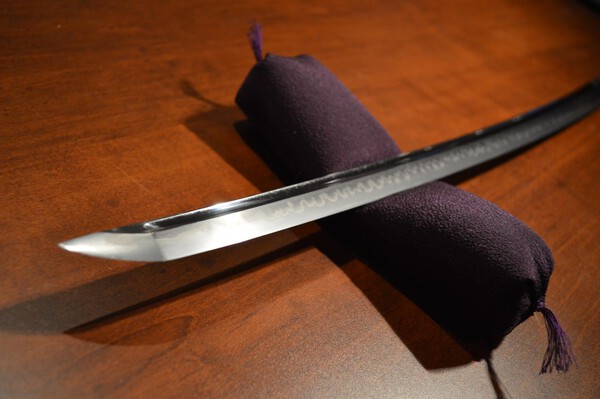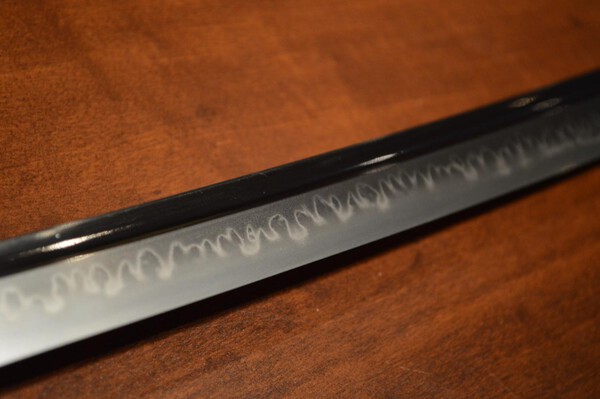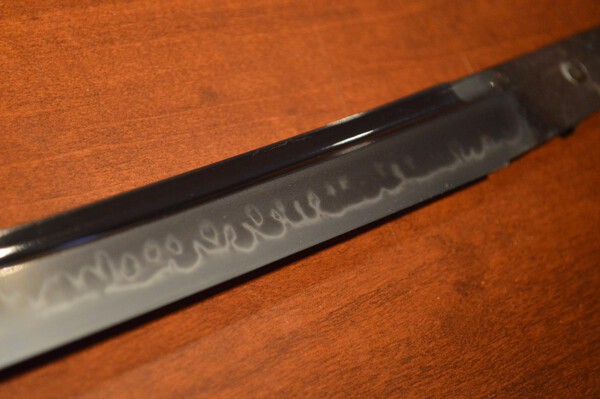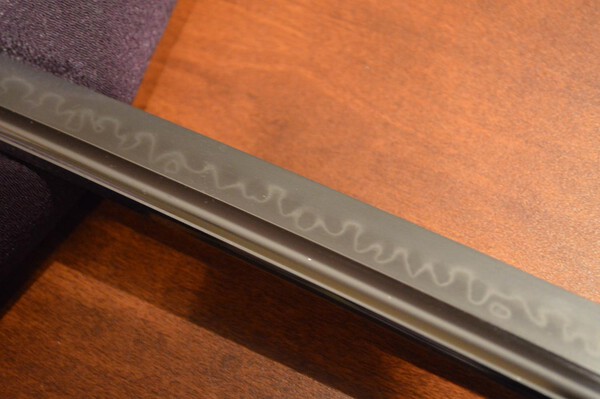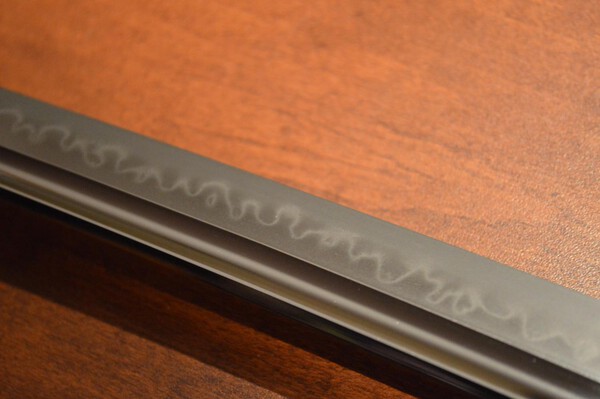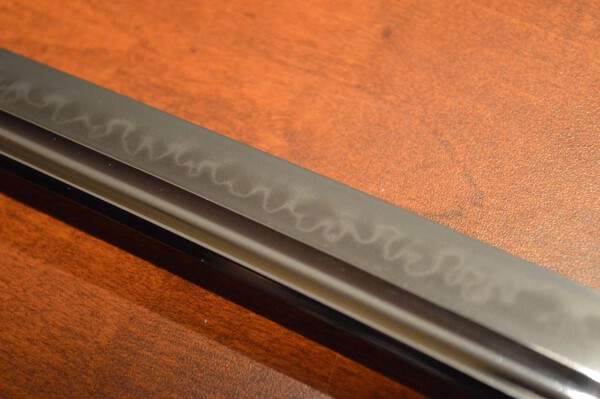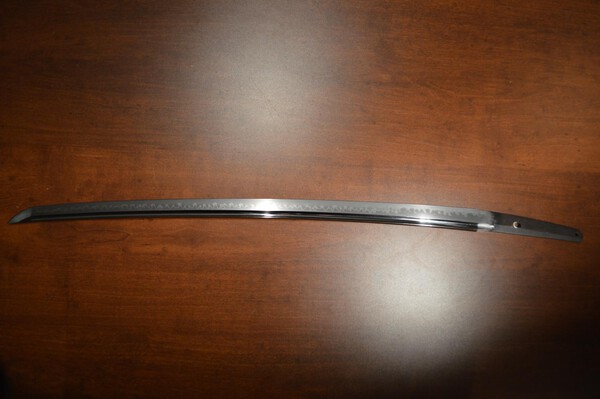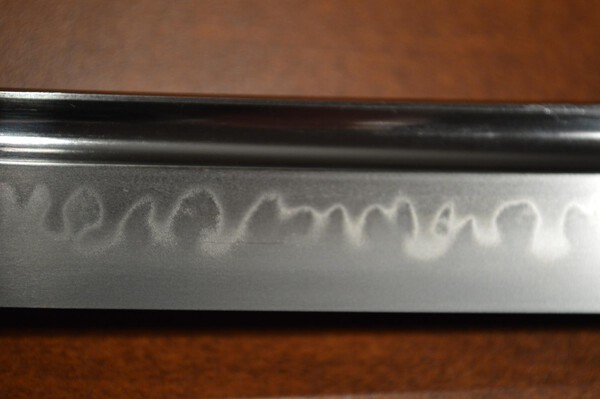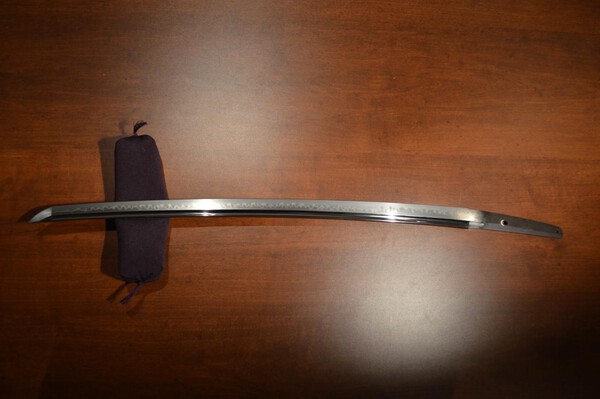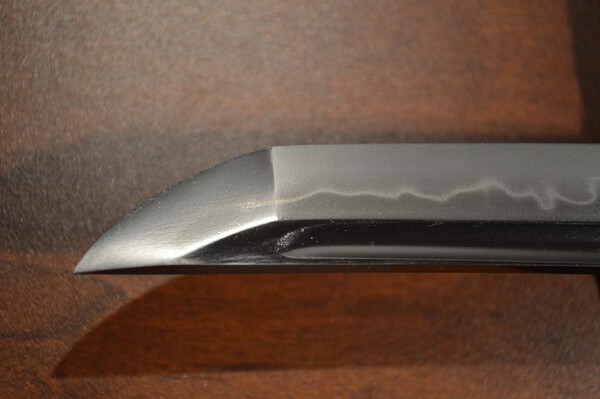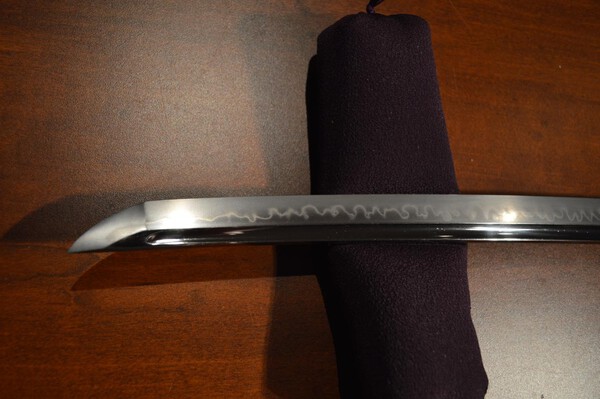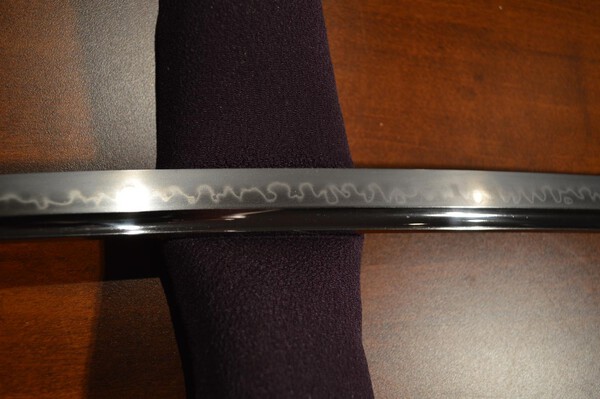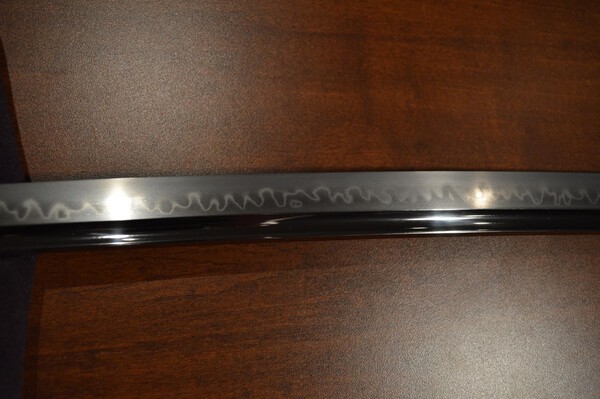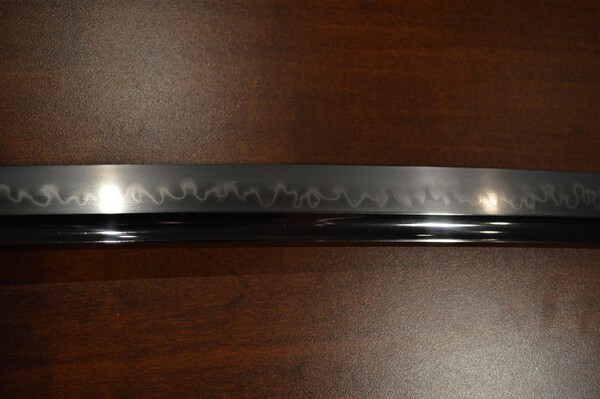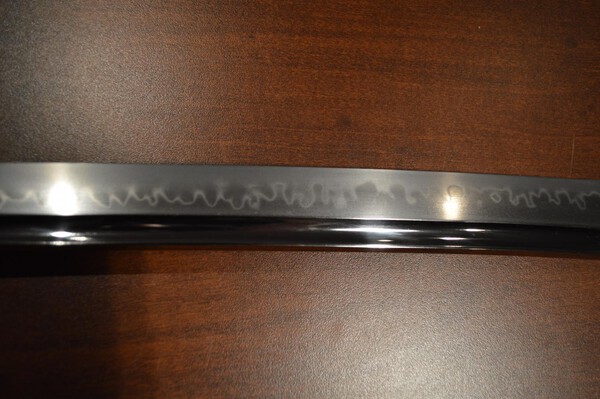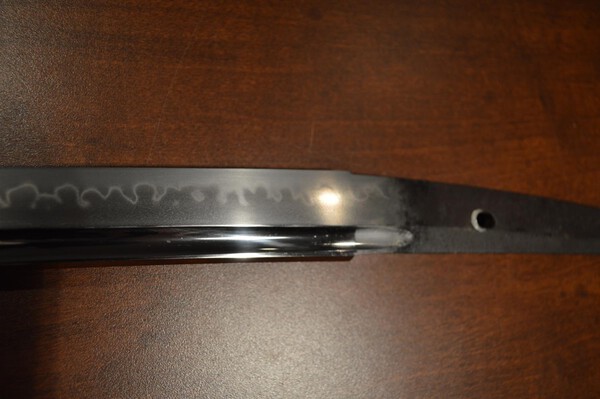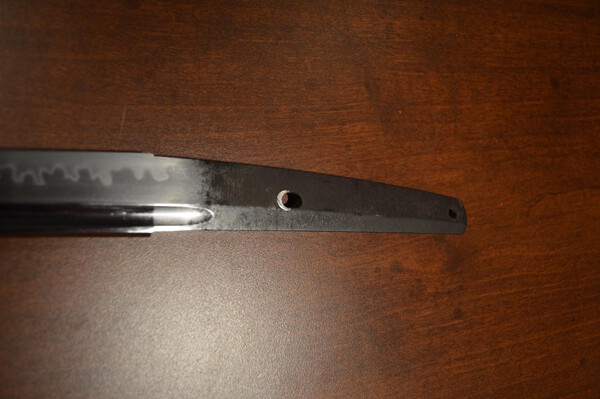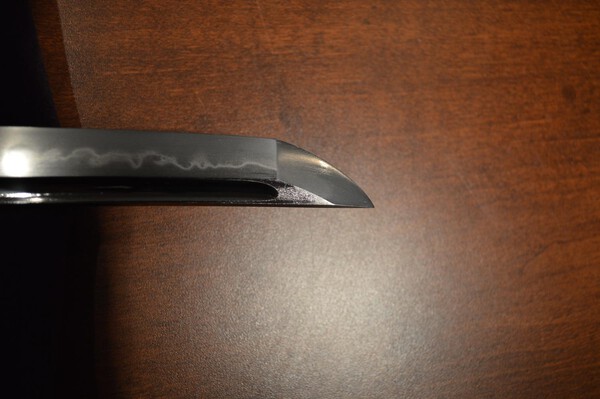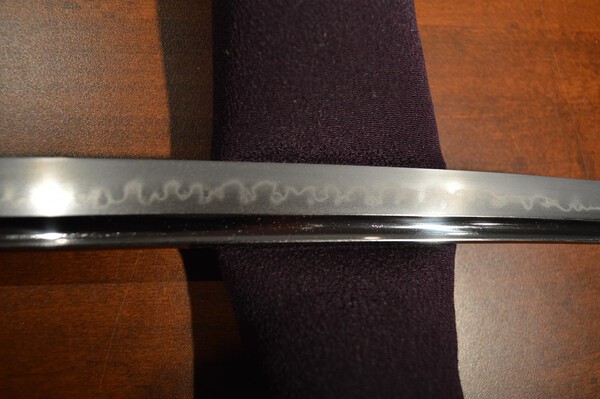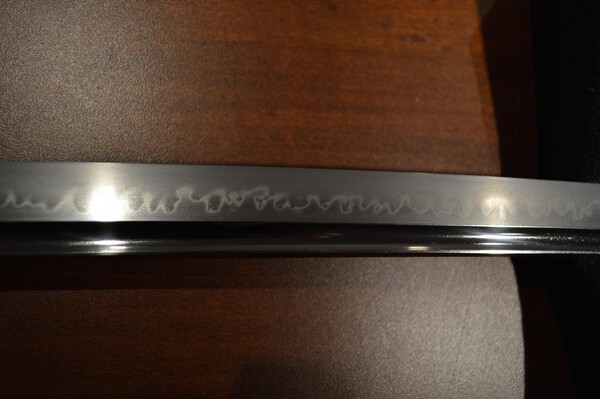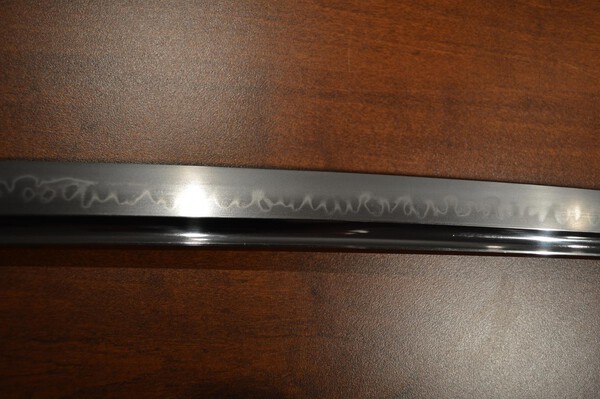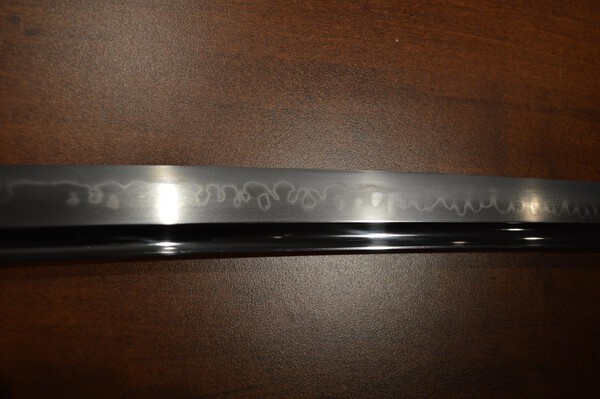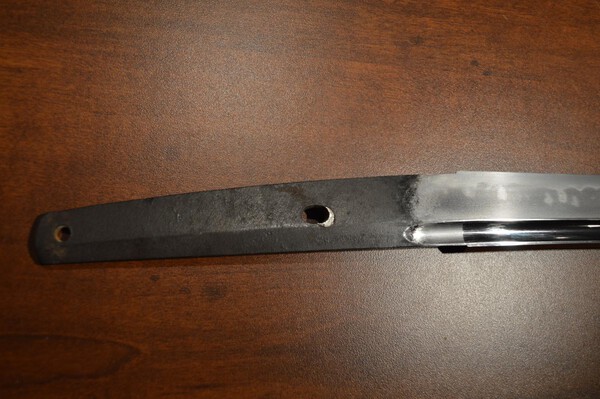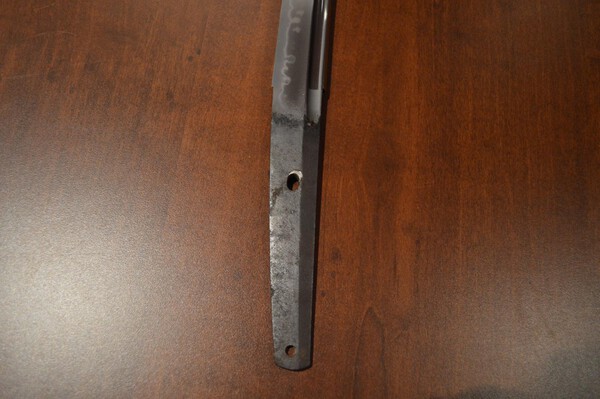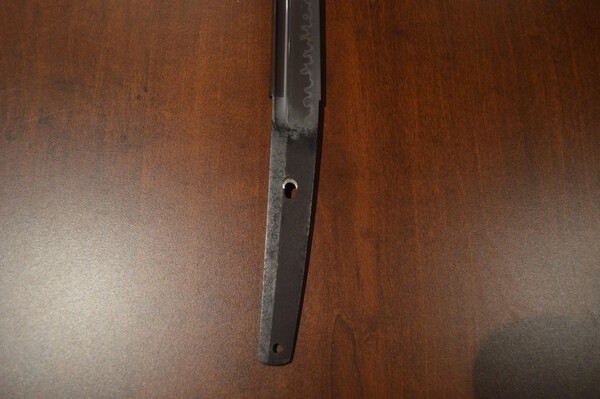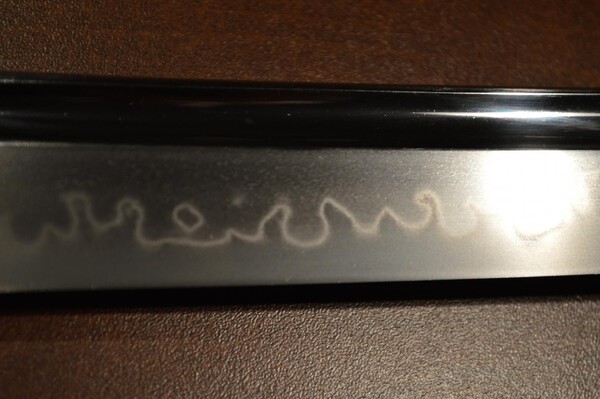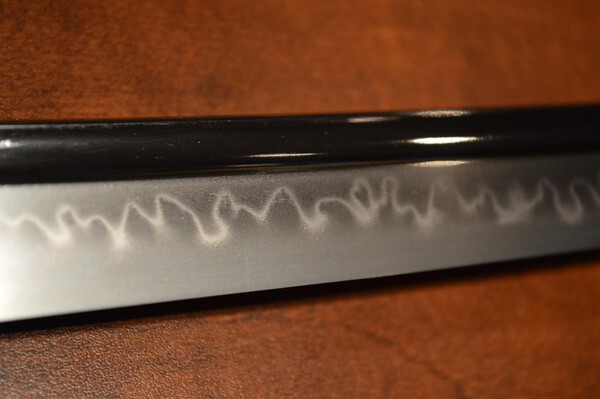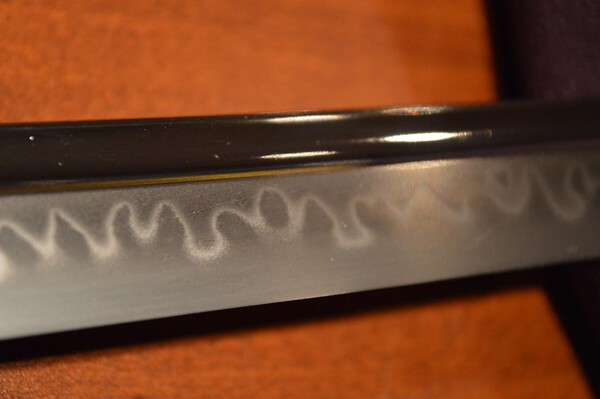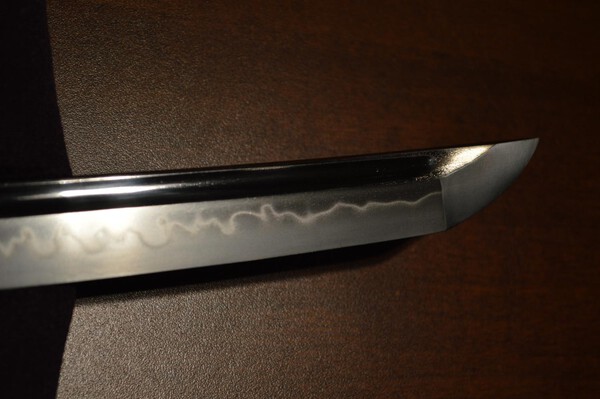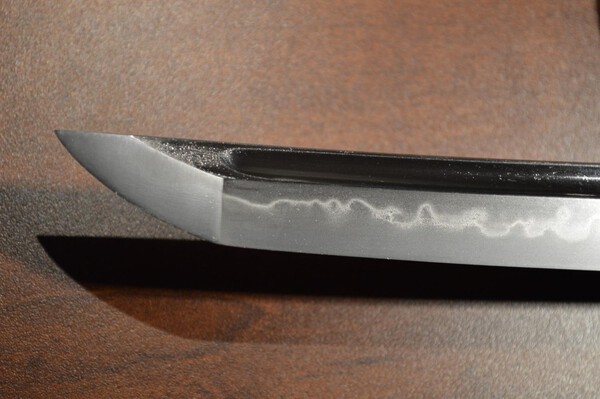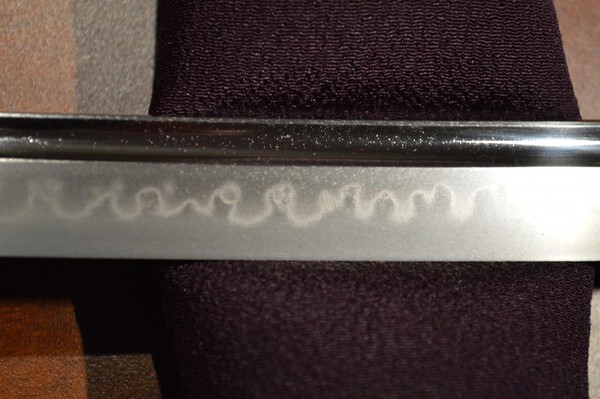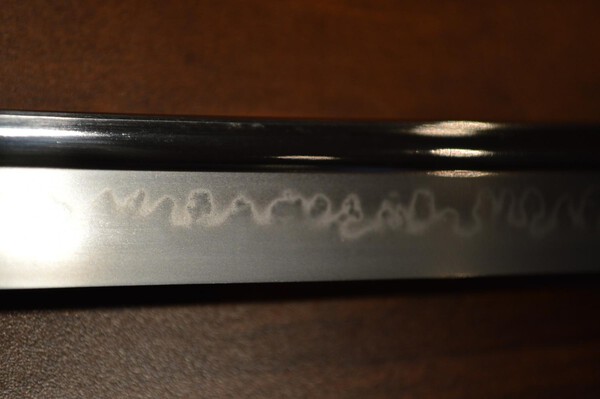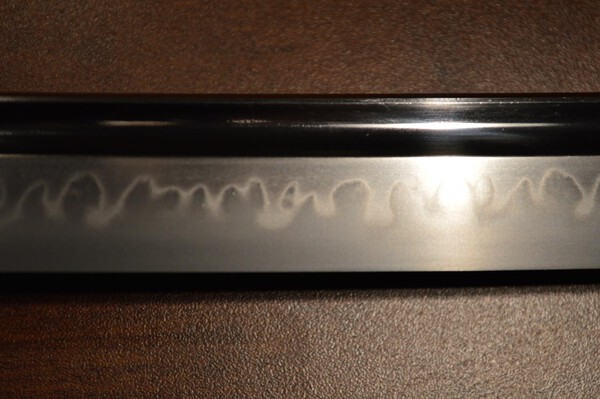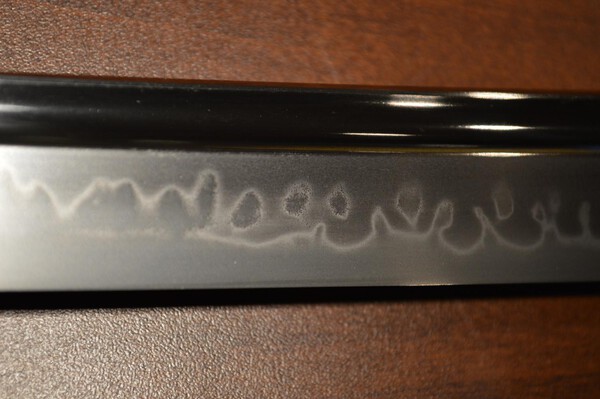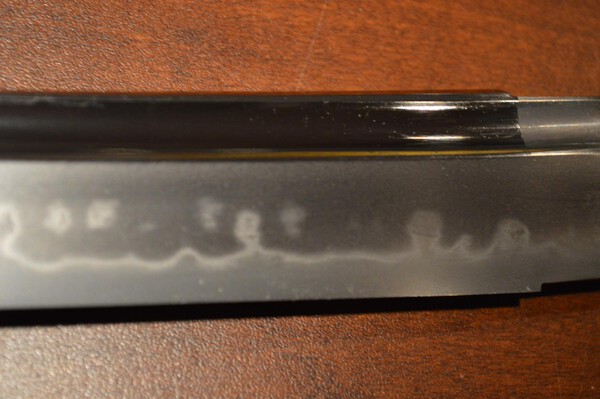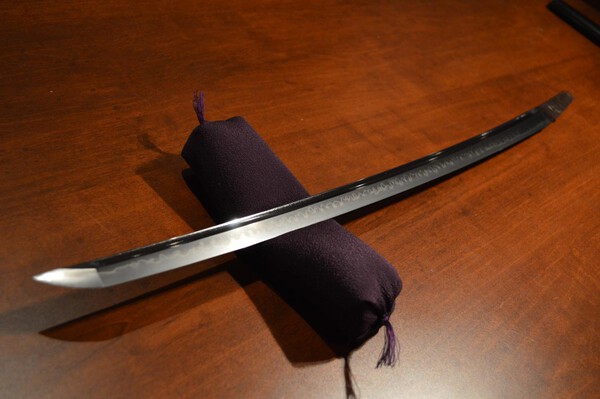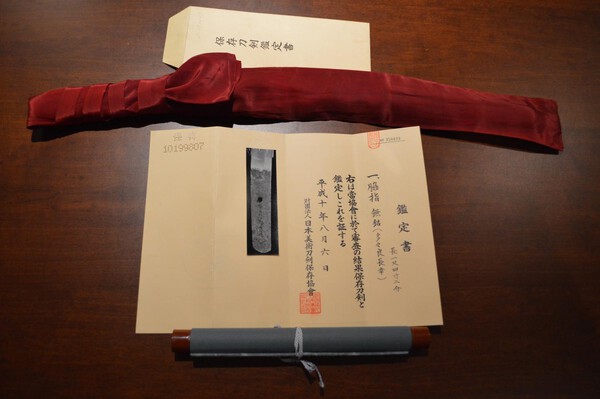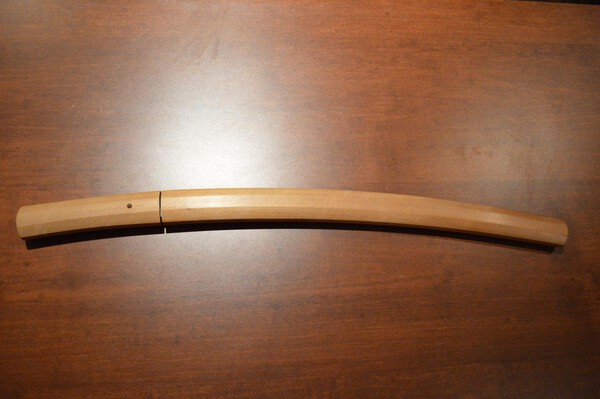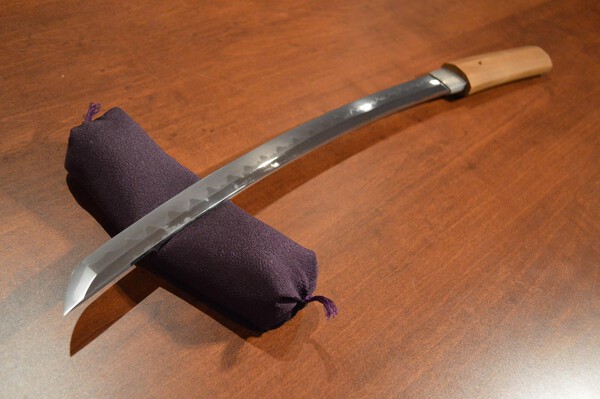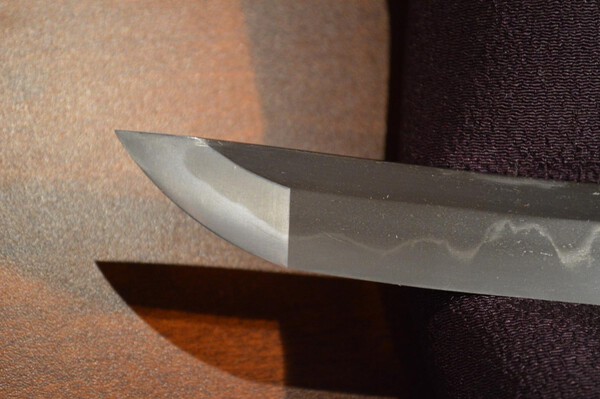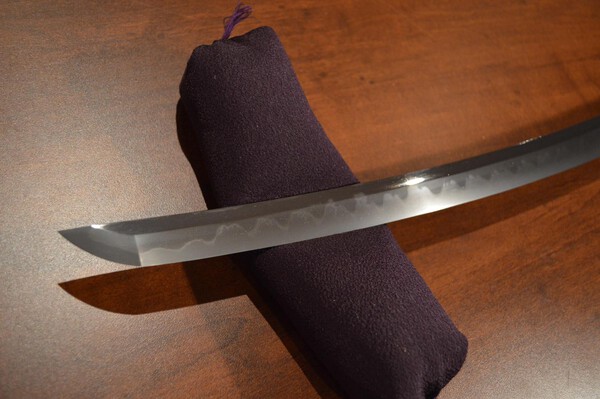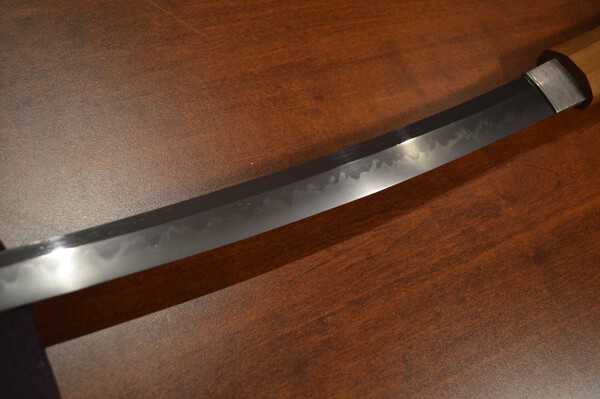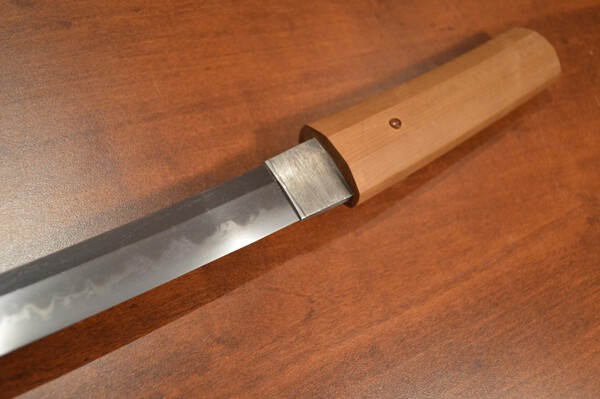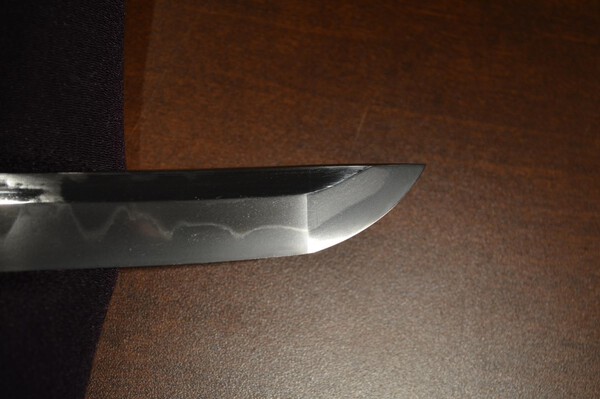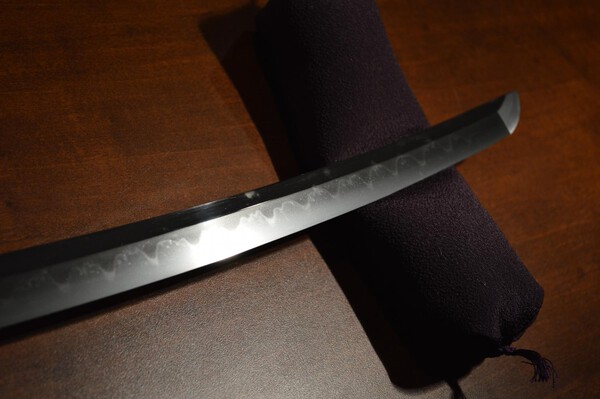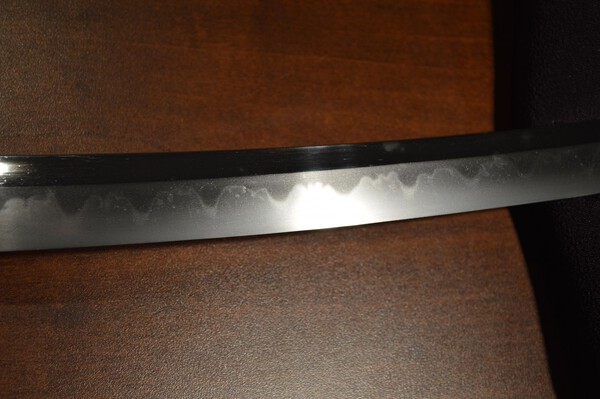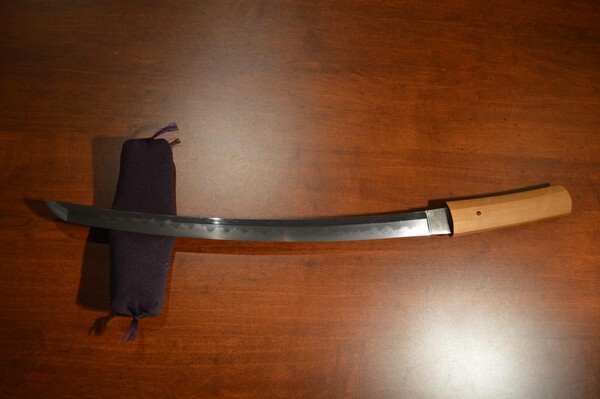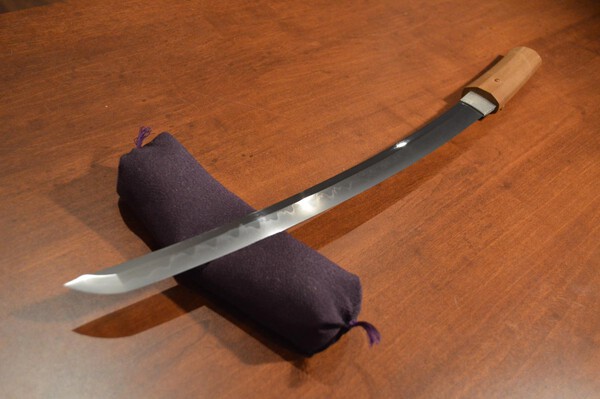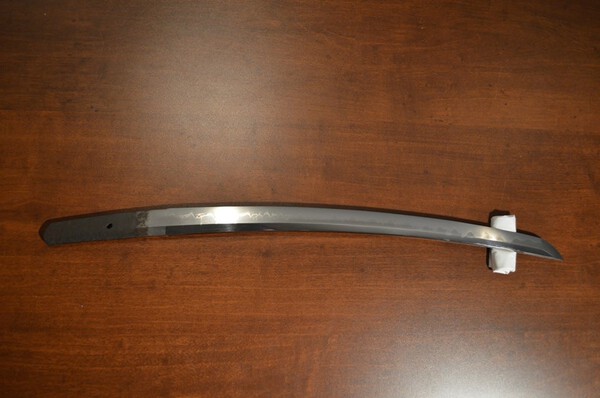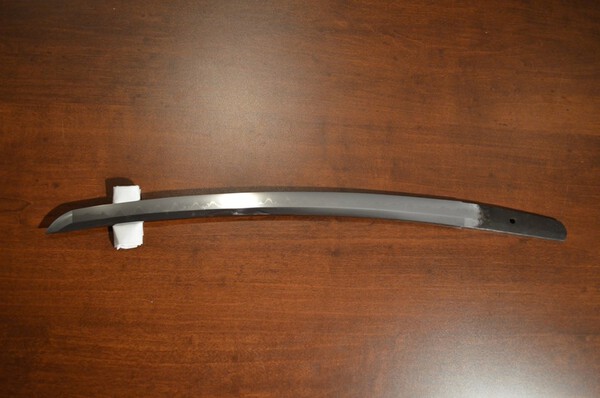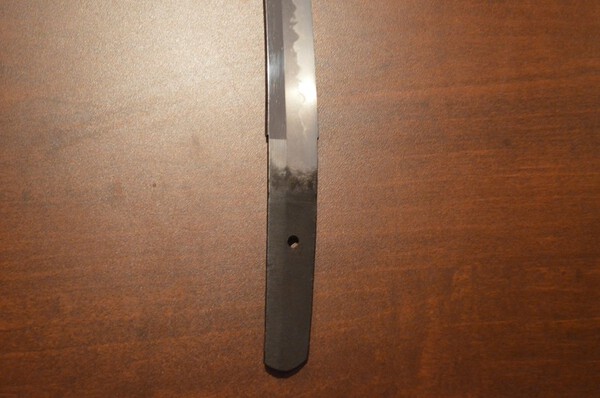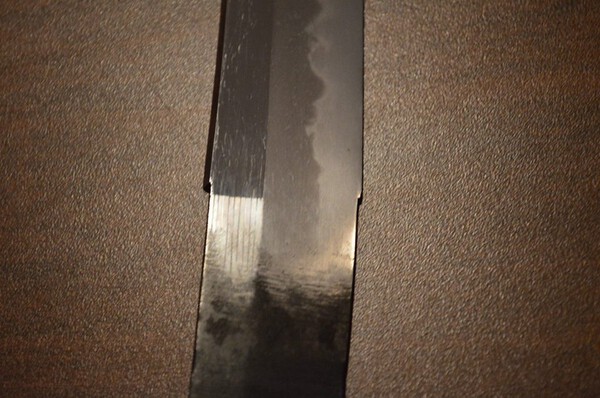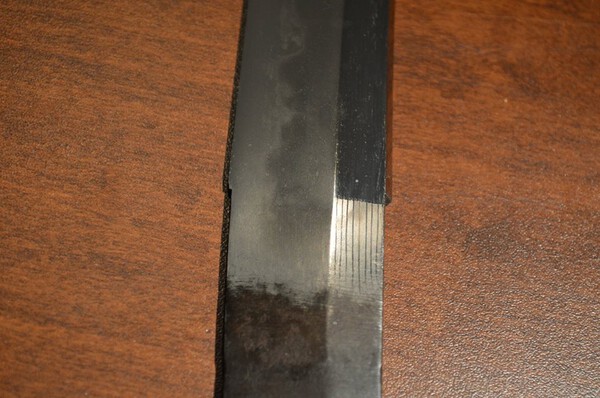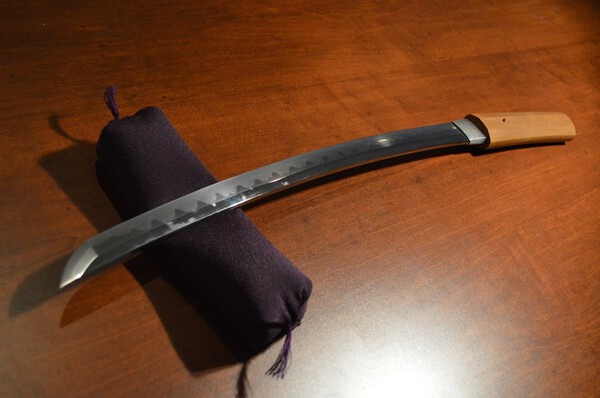-
Posts
154 -
Joined
-
Last visited
-
Days Won
6
Everything posted by Travis Clarke
-

Ubu Mumei Koto Bizen Uchigatana Or Shinto Ishido?
Travis Clarke replied to Travis Clarke's topic in Nihonto
-
Hey guys, A friend of mine recently sent me this sword to look over. He's had it for several years now under the assumption that it is Shinto Ishido School work. That was the opinion of the togishi that last worked on it. It very well could be Ishido work. Last week I posted this sword on a Nihonto Facebook group and started a decent discussion. I've had quite a few very good and informative opinions on this sword so far. Some suggested it could also be a ubu Koto Bizen Uchigatana. Before I thoroughly examined this sword and asked around a bit, I originally thought it was O-suriage. The yaki-dashi and second mekugi-ana threw me off. I figured I would post it on NMB and get a few more opinions. A much broader audience here on the NMB. This sword has recently been returned to its owner. He plans to send it away for a new shira-saya and papers soon. Any and all opinions are welcome. Thanks.
-
Greetings, This sword is by master smith Tatara Nagayuki of the Osaka Ishido School. The Ishido School found its beginnings in Omi province. Omi Province was home to numerous skilled smiths from late Kamakura period into Nanbokucho period. Around Meio Era (1492) a large number of Bizen Osafune smiths came to Omi and started to produce swords. Sukenaga was among these smiths and is said to be the founder of the Ishido School. During Kanei Era (1624-1644) the Ishido school split into three separate groups. These three groups moved to Edo, Fukuoka and Wakayama. The group of smiths that migrated to Wakayama later moved to Osaka. This group was referred to as Kii Ishido School and was led by Tosa Shogen Tachibana Tameyasu. Kawachi no Kami Yasunaga was also a member of this school. Nagayuki studied forging under Kawachi no Kami Yasunaga. Smiths from the Ishido School are said to be direct descendants of the Bizen Ichimonji School. Tatara Nagayuki was the finest sword smith active during the Shinto period producing blades in the Bizen Style. Nagayuki work displays a powerful O-Choji Midare of the Ichimonji School, Hiraki-Gunome-Choji Midare and Koshi no Hiraita Midare similar to Sue-Bizen Yosozaemon Sukesada. The hamon is generally based on nioi-deki, but not a pure nioi-deki as a hint of nie can be seen. He was also one of the few smiths that was able to produce Utsuri during the Shinto period. During the Shinto period swords were tested by a famous family of executioners, the Yamada Family. The swords sharpness was tested on deceased corpses mostly and detailed records were kept. Throughout this period there were 8 sword smiths whose blades consistently preformed. These 8 sword smiths were designated the rating of Saijo-Owazamono (Supreme Sharpness), the highest sharpness rating a sword can achieve. These sword smiths include Nagasone Okimasa, Kotetsu, Shodai Tadayoshi, Mutsu no Kami Tadayoshi, Shodai Sukehiro, Mutsu Daijo Nagamichi, Shodai Kunikane and Tatara Nagayuki. Fujishiro rating: Jo Jo-Saku (Highly Superior). Toko Taikan rating: at 7.5 Million JPY. Hawleys rating: 50 points. Sharpness rating: Saijo-Owazamono Era: Enpo (1673-1681) Hamon: Wide flowing Hiraki Gunome Choji Midare based off Nioi-Deki with Nie, some Tobi-yaki and full temper can be seen on the Shinogi-ji. Jitetsu: Well grained Ko-Itame hada with Ji-nie. Suguta: Chu kissaki, deeper sori for Kanbun work at 1.4cm Nakago: Mumei, 1 mekugi-ana Nagasa: 43.1cm Kasane: 0.65cm Motohaba: Machi, 2.88cm. Kissaki 2.17cm This piece is especially rare as Tatara Nagayuki produced very few wakizashi. This sword is stored in a quality shira-saya and solid silver habaki. It comes with a nice shira-saya bag, full Oshigata and NBTHK Hozon papers. Asking price: $5,888 USD plus postage. Serious offers will be considered. Donation to the board will be made upon sale. T-clarke403@hotmail.com
-
viewtopic.php?f=9&t=10640
-
Hi Isidro, After you receive the sword and you have it in hand, you should post some pictures of the entire nakago, including the nakago jiri and the entire signature. Some close up pictures of the kissaki as well as the boshi. Some overall blade pictures and some close ups of the hamon and jihada. Some clear pictures will help. I'm sure there is a thread on here about photographing nihonto. I'll post a link if I can find it. Take care and good luck with your sword.
-
Here's a nice wakizashi with a two and three body cutting test. http://www.samuraisword.com/nihonto_c/c ... /index.htm Wazamono ranked smith. I just started seeing cutting test wakizashi for sale recently. Nice sword though. Wish I could afford it.
-

New Member Introductions
Travis Clarke replied to Dusty62's topic in General Nihonto Related Discussion
Sean! -

New Member Introductions
Travis Clarke replied to Dusty62's topic in General Nihonto Related Discussion
Welcome to the board, Ed! -

Signed (Rai) Kuniyuki Tachi - NBTHK
Travis Clarke replied to Curran's topic in Auctions and Online Sales or Sellers
Wow! Thank you for sharing, Curran. (I will supply the crowbar)... -
Happy new years from western Canada! A very quiet night at home full of movies and board games with my family. I'm not quite the party animal that I used to be. I wish you all the best for 2014!
-
Branson, As Adam already mentioned, one thing worth noting are the changes in mei styles during this smiths working life. His early works display the "SADA" character cut with the "E" shaped "MAKOTO" character. Later on the lower part of the "SADA" character looks like the "NO" character in some works, hence the name "NOSADA". From around 1503 the lower part of the "SADA" character was cut with the "KORE" character which is "Z" shaped. This smith was occasionally referred to as "KORESADA" because of this. Some of his work is also signed with a KIKU MON. Some key features to look for would be a high SHINOGI, a very active hamon that displays gunome choji, o-midare/notare and hoso-suguha. The hamon displays mainly nioi with small amounts of nie. This smith is said to be the only KANESADA to receive the title of "Izumi No Kami" around 1511. I'm sure someone else will jump in here as well, hope this helps.
-
Hi Gary, I just posted a pretty good example of Katsumitsu mei you can use for comparison. Your post this morning actually gave me some motivation to finish my listing today :lol: viewtopic.php?f=4&t=17619
-
Albert, I'm not sure if all the photos consist of the Boston Collection or not. I don't have the book on hand. I'm sure you would be happy with it regardless. LOTS of eye candy...as Stephen said.
-
Albert, Here's a pretty decent book on fittings by Joe Earle. It is relatively inexpensive and full of great photography. http://www.amazon.com/Lethal-Elegance-J ... 0878467750 http://www.amazon.com/Lethal-Elegance-S ... 0878466797 Hope this helps.
-

New Member Introductions
Travis Clarke replied to Dusty62's topic in General Nihonto Related Discussion
Welcome, Lloyd! I recently read a little write up about you in one of the older JSSC newsletters. I'll have to dig around and try and find it again. Welcome to the board! -
I just recently purchased a beautiful kinko Mino-Goto tsuba from Danny. Seems like a great guy and was a pleasure to deal with.
-
Good for you, Chris. Sounds like a nice little sword. I may have already missed this in a previous thread, but can you post a link for the old ebay auction if its still up? Or some pics? Every once and awhile you can find some decent swords on old ebay. Not often though...
-

Any thoughts about this koshirae?
Travis Clarke replied to mas4t0's topic in General Nihonto Related Discussion
Hi Mark, It's hard to tell from this photo but this almost resembles toppei koshirae. Well, the saya is kind of similar anyway. Toppei koshirae became popular in the Bakumatsu period (late Edo) and had a heavy western influence. With toppei koshirae there was a large metal fitting on the end of the saya called a o-jiri. Your example seems to be a little more pointed at the tip though. Here's an example of toppei koshirae... http://www.aoijapan.com/koshirae-toppei-goshirae -
Joe, Thank you for your input, Joe. I haven't researched this blade much at all since I've had it. You are probably right. I'll start looking into it. John, Even with your wakizashi being in a poor state of polish, if you post a pic of the entire blade, a close up of the nakago and one of the kissaki, some of the members here might be able to give you a general idea of what you have there. Depending on the condition of the blade, someone may be able to pin down what period it was made in anyway. Good luck.
-
O-Yumi, I've got a wakizashi that I believe was used in WW2 and is some what new. I posted a few pics of this sword last year for some help with the translation. I think it is signed by "SukeKuni". The blade appears to be oil quenched and is mounted in antique fittings. The saya looks like its wrapped in burlap and is painted (lacquered?) black. My photography skills are poor at best, so I apologize for the low quality photos. The gentleman that I purchased this from claimed that this wakizashi was indeed brought back from WW2. Just wish I could offer some better pictures. http://s1321.photobucket.com/user/treve ... t=3&page=1
-

New Member Introductions
Travis Clarke replied to Dusty62's topic in General Nihonto Related Discussion
Hi Reuben, Welcome. I'm from western Canada. I live in Alberta, just south of Calgary. Where are you located? -
Reeder, No. The websites that I browse regularly for nihonto don't carry items of this quality. To be completely honest, the majority of Chinese fakes I see are posted and questioned on this site. If you are in the market for a sword similar to this, but authentic, I'm sure there are quite a few people here that can point you in the right direction.
-

New Member Introductions
Travis Clarke replied to Dusty62's topic in General Nihonto Related Discussion
Welcome Gratiot. Another set of books worth checking out are Token Bijutsu: The Journal of Fine Art Swords: Collected Essays: No.1-No.59. These books come in a two volume set, Koto and Shinto edition. -
Martin, This doesn't have much to do with your initial question, but here's a complete set that's worth a look. http://www.nihonto.com/11.8.12.html
-
Can't contribute much in regards to the tsuba. But Keith, Franco...you guys are hilarious...thanks for the laugh :lol: I needed that one today.


